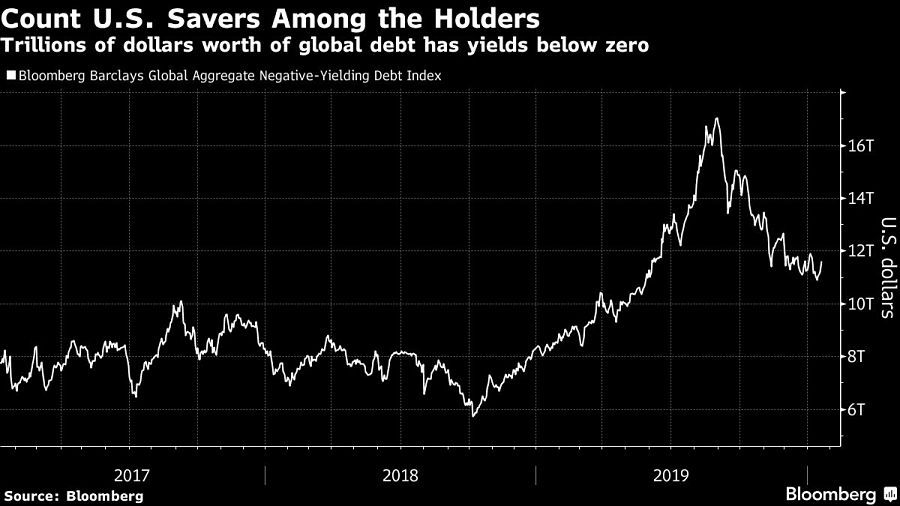President Donald Trump’s trip to Europe this week led him to wonder aloud just who’s buying the region’s negative-yielding debt. He might be surprised to hear that there’s plenty socked away in American retirement accounts.
“I want to know who are these people that buy,” Mr. Trump said Wednesday in an interview from Davos, Switzerland, where he was attending the World Economic Forum. “Who are the people that buy — and they invest in Germany and end up getting, you know, less money at the period of time.”
For starters, BlackRock Inc., Capital Group and Vanguard Group Inc. — among the largest U.S. asset managers — are the top three holders of the German bund due in August 2029, data compiled by Bloomberg show. It yields negative 0.30%, and much of the issue is parked in these companies’ funds, which form the core components of target retirement portfolios.
Advertisement
Vanguard’s Total International Bond Index Fund, with about $140 billion of assets at year-end across investor share classes, held more than $900 million of this particular German security. That made it the portfolio’s largest holding. The ETF version of the fund, which mirrors the make-up of its sister mutual fund, saw its biggest-ever annual inflow last year — adding around $11 billion.
There’s about 22 billion euros ($24 billion) outstanding of the August 2029 bund. Its coupon — the interest payment that debtors provide to creditors each year — is 0%, although the rally in the security’s price means the yield for buyers right now is negative. The European Central Bank, of course, is a big holder, owing to its asset-purchase program, but there are many other owners too.
[More: Bond ETFs come of age]
Below-zero yields don’t necessarily mean negative returns. If demand spurs price gains — which would drive the yield even more deeply negative — investors can profit from capital gains. Some U.S. investors also buy foreign debt on a hedged basis — using instruments such as swaps to remove currency risk. Because of rate differentials, that process can result in a yield above zero.

The Vanguard fund returned 8.3% in the past year, better than almost 60% of its peers, data compiled by Bloomberg show.
Mr. Trump made his comments in the context of another swipe at the Federal Reserve for lifting rates in 2018 and reducing its balance sheet, and not joining overseas counterparts in using negative-rate policy.
The Fed’s key rate is in a range of 1.5% to 1.75%, whereas the ECB’s is minus 0.5%. The difference reflects the relative strength of the U.S. economy and higher American inflation levels.
Jamie Dimon, JPMorgan Chase & Co.’s chief executive, also questioned the rationale of buying negative-yielding debt. He said in an interview from Davos that he would never buy such debt “unless I was forced.”
The remarks speak to how the world of fixed income has been turned on its head in recent years, with long-held investment principles called into question. At the peak, there was a record $17 trillion stockpile of negative-yielding securities globally, after years of bond buying by the ECB and the Bank of Japan to support their economies.
German bonds from 2 to 15 years all yield below zero. The current 10-year yield is about minus 0.28%, whereas the similar maturity U.S. Treasury rate is 1.75%.
“The sovereign bond bubble is the biggest ever, and Americans — through their retirement funds — are among owners of negative-yielding debt,” said Peter Boockvar, chief investment officer at Bleakley Advisory Group.



